The largest and boldest of the common tit species, the Great Tit is an acrobatic and common garden visitor, famous for its incredible repertoire of calls and songs.
Scientific name: Parus major
Is there anything you’d like to know about Great Tits that isn’t covered here? Please ask us in the comments below.
I hear the Great Tit singing
Great Tit Singing, by Phil Soar
With it’s repetitious trill
And from the songs beginning
It went on with fluent skill
I listened quite intently
To determine where it sat
For the sound was almost friendly
And I’d like to tip my hat
Whilst sitting in the garden
I felt that I should say
‘Great Tit, I beg your pardon
You have really made my day’
Where do Great Tits live?
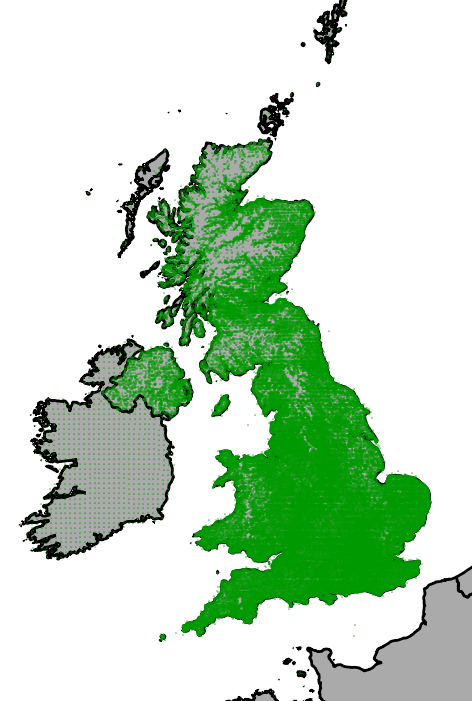
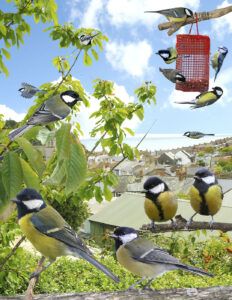
Originally a woodland bird, Great Tits are commonly also found in parks and gardens and almost any areas with similar vegetation. They occur across most of the UK except some northern and western Scottish islands. Further afield, you can find Great Tits eastwards throughout central Asia and southern Russia, and in northwest Africa. Further still, they are replaced by the very closely related species Japanese Tit in east Asia, and Cinereous Tit in south Asia.
In the UK, Great Tits do not move far from their local area. In part this is because of their reliance on garden feeding rather than more erratic, natural food sources. Continental birds may migrate more regularly, especially in years of poor beech crop, one of their favoured autumn and winter foods.
What food do Great Tits eat?
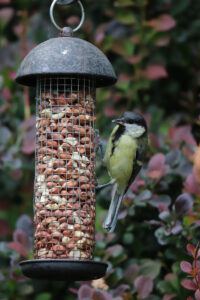
A regular visitor to bird tables and feeders, Great Tits are especially fond of peanuts but will eat almost any bird food that is provided. They will also feed more from the ground than other tits. This is not surprising considering that one of their favoured natural foods in winter is the fallen seed crop of beech trees.
They are active feeders, hunting in trees for insects and spiders amongst smaller branches and leaves, and crevices in the bark. This makes them a welcome visitor to the garden as they will also help rid it of aphids and other ‘pests’, caterpillars in particular being what they prefer to feed their young.
Where do Great Tits nest?
Great Tits are cavity nesters, with small holes in tree trunks the main natural nesting site, but they will readily use nest boxes.
Many other man-made structures attract Great Tits to nest, such as walls, pipes, letter boxes and air ducts.

The Great Tit nesting behaviour is very similar to that of the Blue Tit, although their clutches are smaller with typically between 7 and 9 eggs.
What do Great Tits look like?
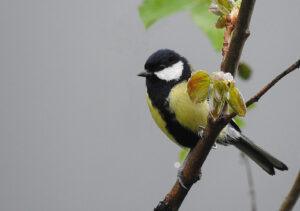
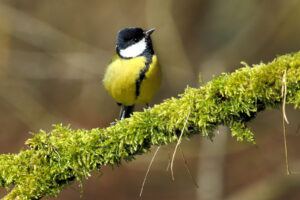
Larger than the similarly common Blue Tit, the Great Tit is mostly green and yellow with large white cheeks on its black head.
The bold black stripe on its underparts is the best way to tell apart males and females: the male’s stripe is broader, especially on the belly, and the female’s does not reach as far as the legs.
When it flies away, the black tail with white outer tail feathers is obvious.
What do baby Great Tits look like?
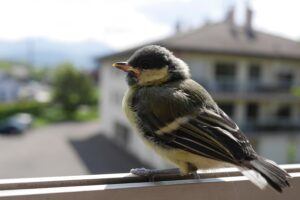
Young Great Tits are a duller and yellower version of the adult, without the bold black stripe on the underparts.
What do Great Tits sound like?
Great Tits have an amazing and varied repertoire of calls, and sometimes mimic other species. In Bill Oddie’s Little Black Bird Book, he mentions that ‘if you hear a call and you don’t recognise it – it’s a Great Tit’!
The most common song is an easily recognisable ‘tee-cher… tee-cher… tee-cher…’, its repeated and rhythmic nature earning the old name ‘saw-sharpener’.
Dozens of different call variations have been noted, with single birds having multiple song types as well. It is thought that this gives the impression to intruders in their territory that there are multiple birds already present and they should move on to compete on easier grounds!
One of the most common calls is a nasal scolding ‘chh-chh-chh’.
How to attract Great Tits?
Peanuts and sunflower seeds are two of the best foods for Great Tits, especially in winter. They will eat just about any food you put out though, from hanging feeders, bird tables and the ground.
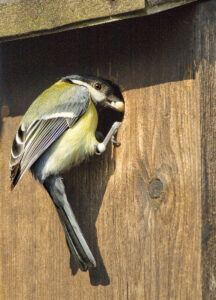
As always, do not forget to supply fresh water for drinking, and bathing.
You can also provide a nest box with a round entrance hole, which should be a little larger than that for Blue Tits.
If you have pets at home you could leave moulted hair out in the garden and Great Tits may well use it to line their nests!
More facts about Great Tits
Great Tit beaks are getting longer!
Did you know that Great Tits in the UK have longer beaks than their relations on the Continent? Researchers believe that Great Tits have rapidly evolved longer beaks to more effectively take food from bird feeders. They have been able to detect genetic differences linked to beak length between birds in the UK compared to those in the Netherlands. Long-term studies have shown that average beak length in the UK has increased in just the last 40 years or so. Those birds with longer beaks were more frequent visitors to garden bird feeders compared to those that spent more time in woodland.
However, interestingly Great Tit’s beaks change shape seasonally to deal with changes in their natural food source. Their bills are shorter and hence stronger during the autumn and winter when seed is their natural food of choice but, in the spring when feeding more on caterpillars, the bills become longer.
Aggressive behaviour of Great Tits
As the largest of the tits, Great Tits can be aggressive and dominant at the bird table, but this aggression goes a lot further. There are numerous instances of them killing other birds, even smashing their skulls and eating their brains! These include picking on exhausted migrating Goldcrests, killing Pied Flycatchers to evict them from nest boxes, and killing Redpolls and Yellowhammers at a feeding site in Finland (article in Finnish, with gruesome photos!)
Animals aren’t safe either. In Hungary in winter, when food is scarce, Great Tits regularly enter a cave to kill and feed on hibernating pipistrelle bats!
However, Great Tits don’t always get it their own way, as one pitcher plant will attest!
Intelligence
Great Tits have been known to use conifer needles as tools to extract insect larvae from crevices in tree bark. Their ingenuity has been further shown in experiments where peanuts were suspended from strings. Most species tried to reach these in flight, however, some individual Great Tits (as well as some Marsh Tits and Blue Tits individuals) learnt to perch on the branch and pull the nut to them. They would gradually pull the string up with their beaks, stepping on it with one foot to hold it as they did. This is not dissimilar to how they deal with more natural large food, such as beech mast and acorns and even caterpillars: holding them with their feet whilst they peck at them with their beak.
They are also able to learn from watching each other. Researchers from the Department of Zoology of the University of Cambridge found that birds that watched other birds attempting to eat disgusting food would then avoid that food without first needing to try it for themselves.
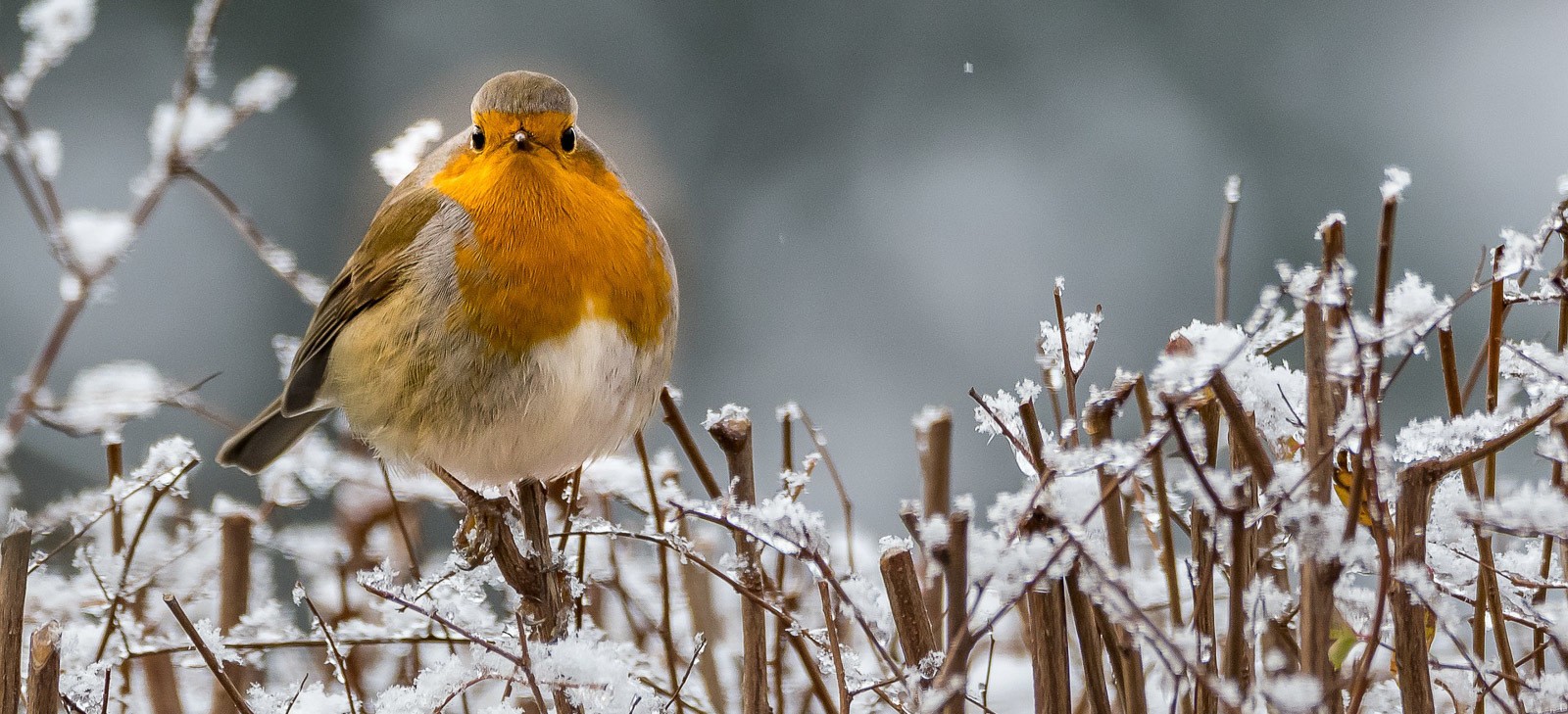
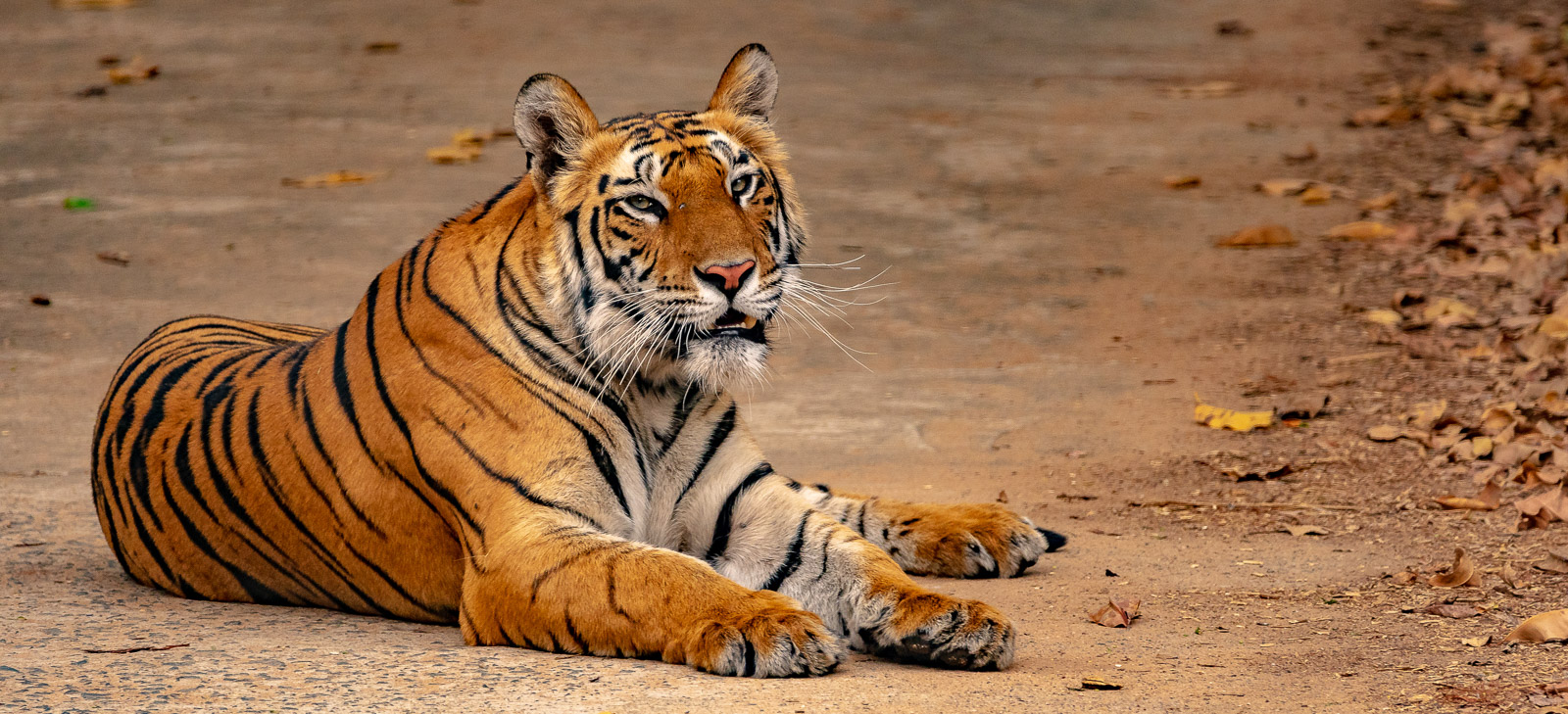
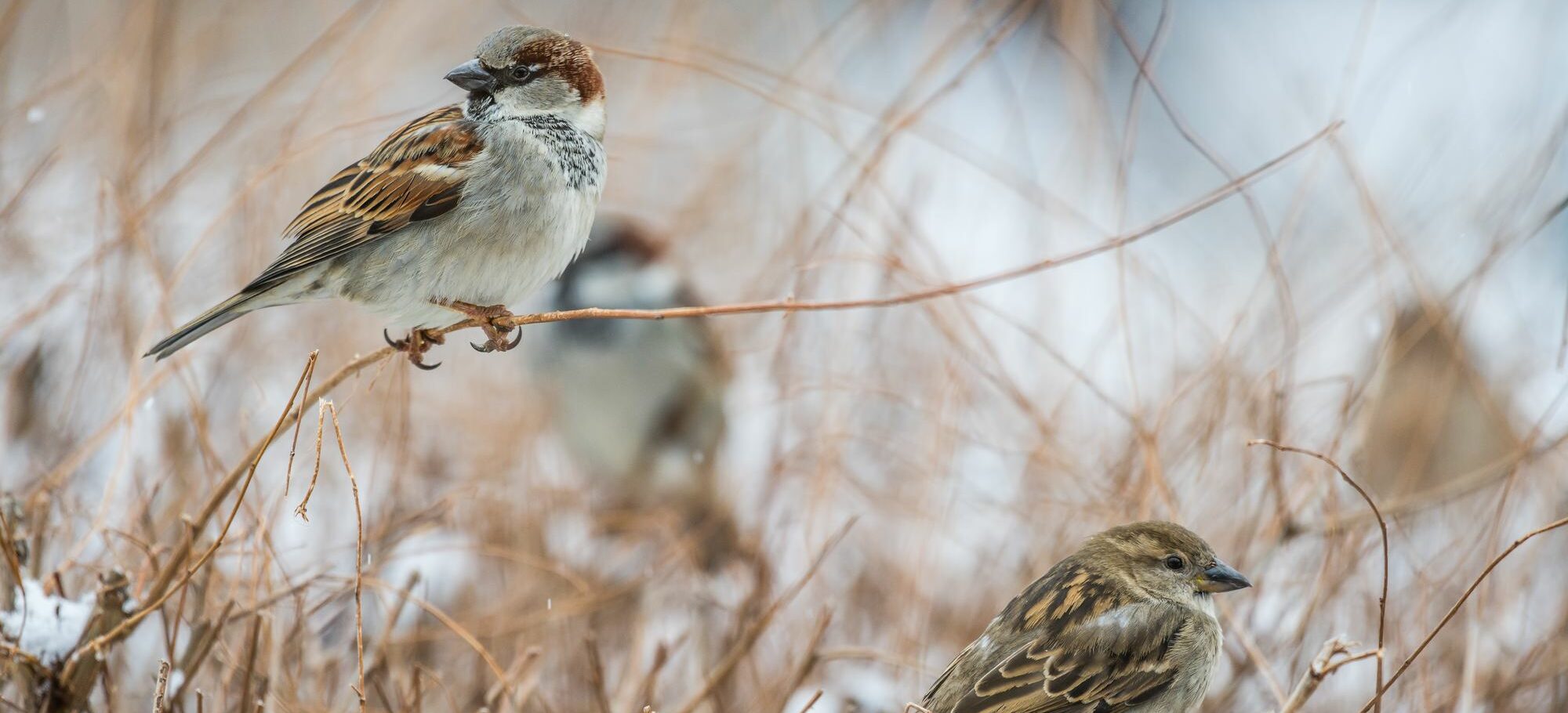
Do Great Tit chicks make any sounds?
Yes, from a few hours after hatching they will make various sounds, mostly “begging calls”, which become clearer calls as they get a little older. Listen here to some 13-day-old Great Tits in a nest box.
what makes a great tit desert a nest having made a nest and lay one egg and unfortunately not
seen at the nest box again ?
It’s difficult to say really. They may have been disturbed by something, e.g. cats or other birds, or an adult may have been killed. This is the main reason for Blue Tit broods to fail: if it happened at a later stage, e.g. after some chicks had hatched, then the remaining parent will normally continue to look after them alone. If it happened after just one egg was laid it seems likely they would abandon the nest. Unlike Blue Tits, Great Tits often have two broods in a year, so maybe it/they will try again.
I’m pretty sure it is a great tit, but just slightly different teacher teacher song that calls at exactly one minute past eleven am and again at exactly one minute past nine pm. Honestly, on the dot. My kids would say “oh it’s 9 o’clock”. I’m still only 99.9 percent sure it’s a great tit but we have them in the garden and a box
Great Tits do have a very wide repertoire of calls so that is most likely, but you could check calls of Coal Tit, which are a little similar.
Hi Mike why do our great tits keep disappearing for a day or two then come back as though they are nesting still any ideas thanks Andrew Teo.
Hi Andrew
If they have eggs but no young yet this isn’t unusual. They typically will only start incubating when all eggs are laid so that all chicks hatch at the same time, and during that time they don’t have to tend the nest much.
Blue tits have nested in my bird box. I cannot see if eggs have hatched and the young birds already flown. But now it seems as if the Great tits are interested in the box, have even entered. Is it possible that the Great tits are now using the nest left vacant by the Blues? I’m just curious.
Thank you for your opinion.
Hi Margaret
Yes it’s quite possible. Did you see the Blue Tits bringing food? When the young leave they may disappear from the immediate area quite quickly so they are easy to miss, but when they are being fed the adults are constantly coming and going with caterpillars, so a lot more obvious then.
Should I leave the nest of the great tit in the pitcher,where it was this year,or remove it and clean? Will the tits use the same nest next year, or prefer to make a new one?
The birds will make a new nest each time, so yes, ideally old nests should be removed and nest boxes cleaned. This can be done in the autumn, when you are sure the box isn’t being used at all, and before cold weather when birds may use it for roosting.
Why does the great tit in my garden fly to my window and tap on it (only twice at a time) then he sings for a bit and flies off . I am not complaining its very nice of him , I thought he was attacking his reflection but he does it a t different times in the day maybe hes just friendly .
Maybe he is just friendly as you say, or maybe he’s trying to remind you to fill up the bird feeder?!
I have one that comes everyday, flaps around at my window, I open it and he sits on the sill. I love it. Managed to take a picture of it this morning.
We have a pair of great tits nesting, they are feeding young but sadly and shockingly our young cat caught one of the adults today naturally we tried to rescue it but our cat ran off with it. The other adult is continuing to take food to the chicks , will it find a new mate ? and could the chicks survive with just one parent ?
Thank you
It’s unlikely to find a new mate, but will try to feed the chicks on its own. That’s a tough job as it normally keeps both parents very busy to find enough food for their brood, so good luck to it!
Today I rescued an adult blue tit, it was hanging out of the nest box, her foot was snagged but thread from her nesting, I got her off the long bit, and careful cut the pieces off her claw, I removed the top offending nesting and put her back into the box. After about 15 minutes she came out so I looked into the box and there was four chicks with wide opens mouths, when I looked in the box before there was no chicks they must have been dragged to the bottom of the nest, box when it was pulled about, the nest was perfectly formed and the chicks waiting for their foo. The parent instinct must have been very strong, the mother was completely exhausted by her ordeal, but found the strength to rescue her chicks and remake the nest, what a wonderful thing to show the importance of her brood, we can all learn something from that. Thank you. Shirley.
I have a long nest box for swifts which is used by great tits. Is it likely that more than one pair would nest at the same time.
It’s unlikely. Great Tits don’t nest communally, unlike Swifts and House Sparrows for example. Great that they have used the swift box though!
Yes, very pleased and sounds like quite a brood in there! Thanks for reply.
Do great tits regurgitate food to feed their young?
Yes they will. They may feed small bits of food directly, but as with many birds, and when the chicks are very young, they usually feed them partially digested and regurgitated good.
Do great tits fly faster than the common house sparro? Their flight pattern is different – more like a magpie’s or hoopoe.
I doubt there is much difference. I would also have said they fly quite similarly, and definitely not like a Hoopoe which has a very distinctive undulating flight!
I have had a Great Tit in my nest box, via camera, every night for a week. However for the past 3 nights it hasn’t turned up. Is this normal and is it likely to return.
Since it’s not nesting or checking out potential nest sites at this time of year, it’ll be using the box just for roosting. They don’t necessarily stuck with the same roosts all the time, so it is quite normal. I hope it does come back some time for you!
Many thanks.
Great tits are singing all day in my garden – end of January. It is non-stop. I wonder why? Many thanks, Stephen
It is quite early for Great Tits to be singing the typical “tea-cher tea-cher” song so persistently. A few fine days have got them thinking spring is on its way maybe?!
Thank you – yes, we are thinking one or two of them (we see a dozen at a time) are staking out their territory for breeding. Just fyi: we don’t take part in the one-hour bird watch event, but yesterday morning the following came to our garden: wrens, blackbirds, a nuthatch, a blackcap, robins, great tits, blue tits, great spotted woodpecker, pheasants, wood pigeons, chaffinches, a jay, magpies, dunnocks, long-tailed tits, and even caught a glimpse of a song thrush, hopping out from the box hedge. We have two acres of overgrown orchard/woodland, so many of them live out there. Stephen
We seem to have lost one of the parents of our great tit nest, does it need both parents to feed the fledglings
Hi Elaine
Yes, one parent will usually try to feed on its own. Of course, it’s hard work for two so extra difficult for one! It’s unlikely many chicks will fledge but if there are sufficient insects around (which hopefully recent wet weather means there are) then the sole parent should succeed in fledging some youngsters.
We have had more Great tits and Blue tits in our garden recently than ever before and the Great tits seem to be burying seed in the lawn and borders, is this normal ?
Hi Tom, sorry for the delayed reply. Are you sure these were Great Tits, and not Coal Tits? I’ve never heard of Great Tits storing food (and a quick search couldn’t find any references) but Coal Tits are well-known for storing food as a winter cache, e.g. see https://www.birdforum.net/threads/food-caching-by-coal-tits.126108/
We converted an old American post box into a nesting box and last year we saw it being used by Blue Tits and Great Tits, so we expected to see two nests. When we took it down, to our surprise there were three nests in a row! We’ve bought a camera this year, but so far only one pair of Great Tits are in residence.
Hello, in 2023 i had a pair of great tits in my bird box, out of 9 eggs only 2 chicks survived the rest died in the nest. Probably through lack of food.
This year they are back and now have 11 eggs, is there anything I can do to help with food say ‘live mealworms’ in the garden when the eggs have hatched?
Regards
Ken
Hi Ken
Two chicks successfully fledged is actually about average, and is sufficient to support the population. You can’t really supplement natural food: the parents are generally good at finding the caterpillars that the chicks need. However, providing live mealworms won’t do any harm, and may help the adults at least.